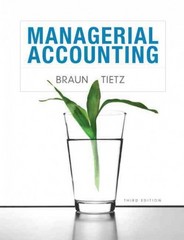A corporation has paid estimated income taxes of $80,000 during the year 2013. At the end of the year, the corporation's tax bill is computed to be $100,000. What is the income tax due/refundable?
Which of the following statements is not correct?
| Corporations must estimate and prepay their income taxes through quarterly tax deposits. |
| At the end of the year, when the worksheet is prepared, the Income Tax Expense account is adjusted only if the corporation owes additional taxes. |
| Income Tax Expense may be shown as an operating expense on a corporation's income statement. |
| On a corporate income statement, the tax effects of each extraordinary item is offset against each gain or loss to show the effect net of taxes.' |
The Paid-in Capital in Excess of Par ValuePreferred Stock account would be shown in the
| Assets section of the balance sheet. |
| Stockholders' Equity section of the balance sheet. |
| Revenue section of the income statement. |
| Expense section of the income statement. |
Which of the following statements is not correct?
| Retained earnings represents a cash fund. |
| A corporation can have a large cash balance but no retained earnings. |
| A corporation can have a balance in the Retained Earnings account but no cash. |
| Retained earnings represent the undistributed profits and losses of the corporation. |
The entry to record the issuance of 1,000 shares of $10 par-value common stock for $14 a share consists of a debit to Cash for $14,000 and a credit to Common Stock for
| $10,000 and a credit to Gain on Sale of Common Stock for $4,000. |
| $10,000 and a credit to Paid-in Capital in Excess of Par ValueCommon Stock for $4,000. |
| $10,000 and a credit to Treasury Stock for $4,000. |
A corporation received a subscription for 1,000 shares of 10 percent, $100 par-value preferred stock at $103 a share. The entry to record this transaction consists of a debit to Subscriptions ReceivablePreferred for $103,000 and a credit to
| Preferred Stock for $100,000 and a credit to Retained Earnings for $3,000. |
| Preferred Stock Subscribed for $100,300. |
| Preferred Stock Subscribed for $100,000 and a credit to Paid-in Capital in Excess of Par ValuePreferred Stock for $3,000. |
| Preferred Stock Subscribed for $100,000 and a credit to Gain on Sale of Preferred Stock for $3,000. |
The entry to record the issuance of 1000 shares of $2 stated-value common stock for $10 a share consists of a debit to Cash for $10,000 and a credit to Common Stock for
| $2,000 and a credit to Paid-in Capital in Excess of Par ValueCommon Stock for $8,000. |
| $2,000 and a credit to Paid-in Capital in Excess of Stated ValueCommon Stock for $8,000. |
| $2,000 and a credit to Gain On Sale of Common Stock for $8,000. |






